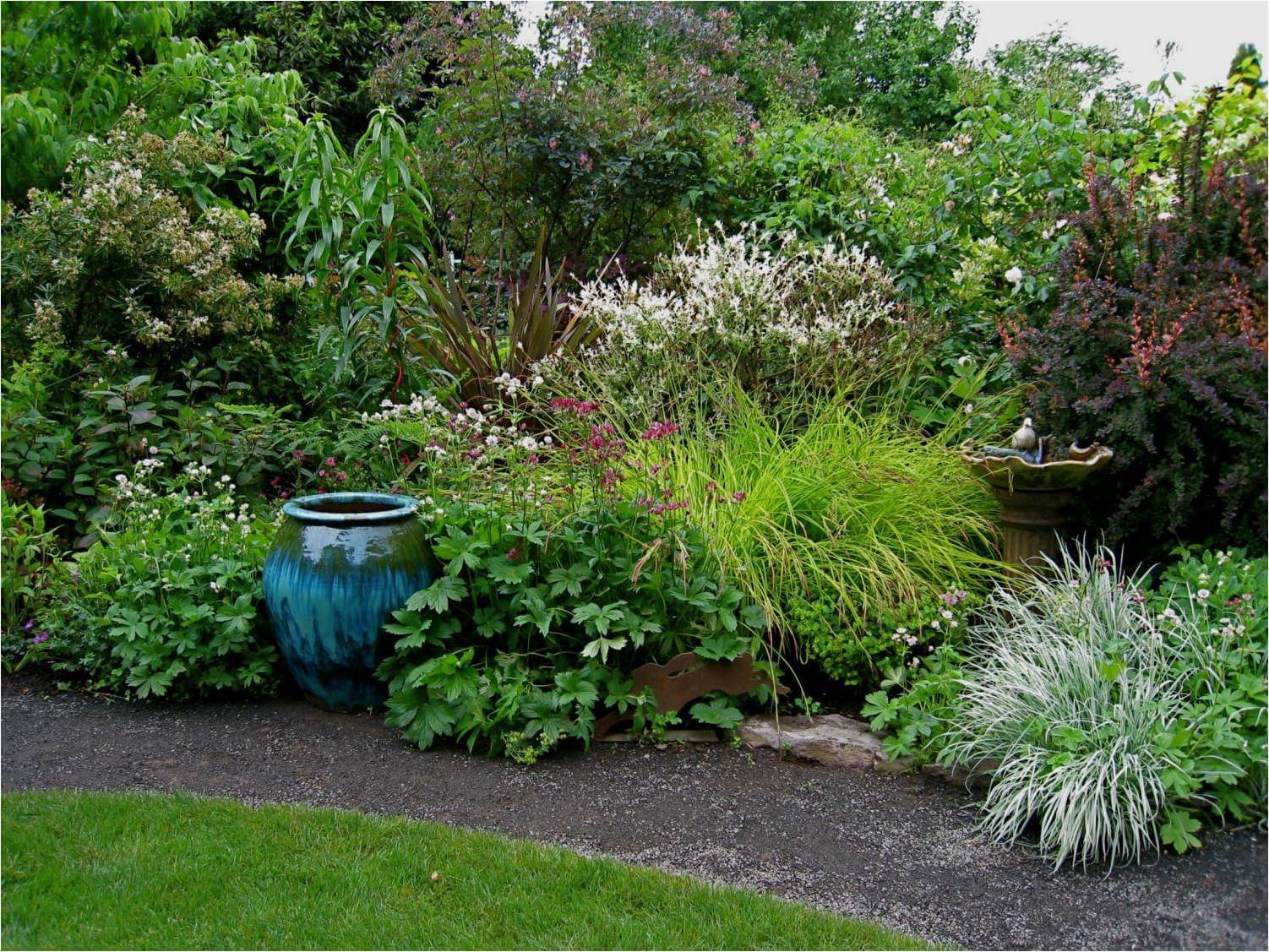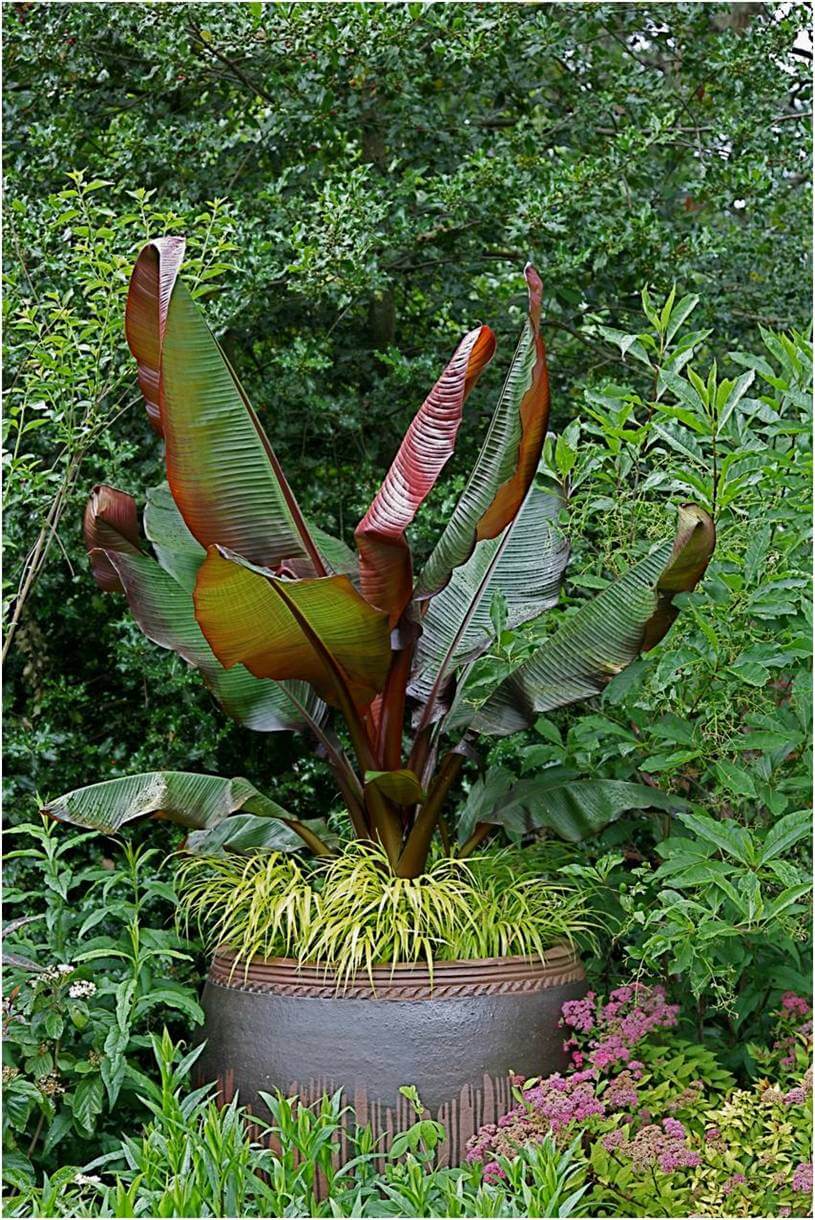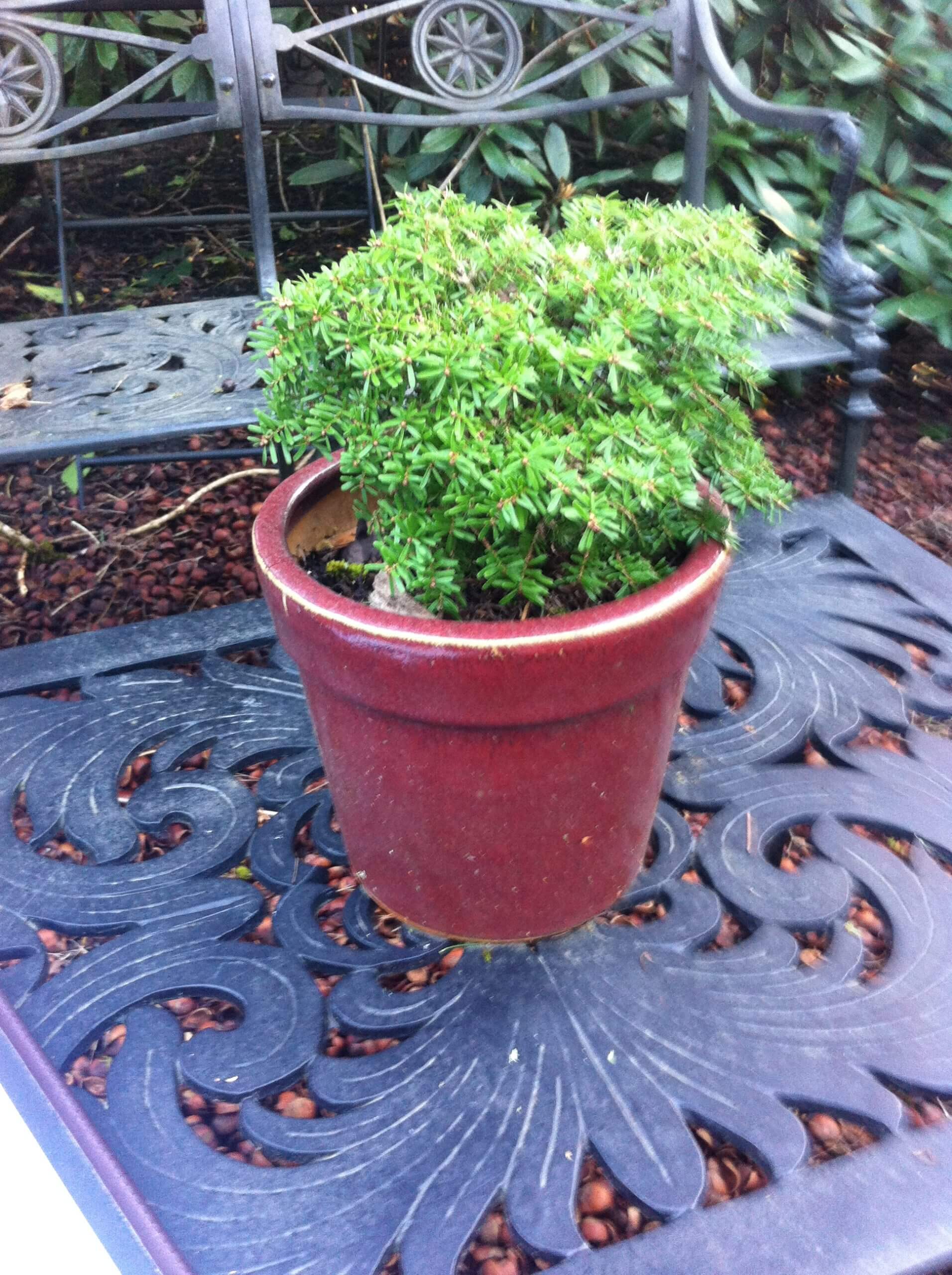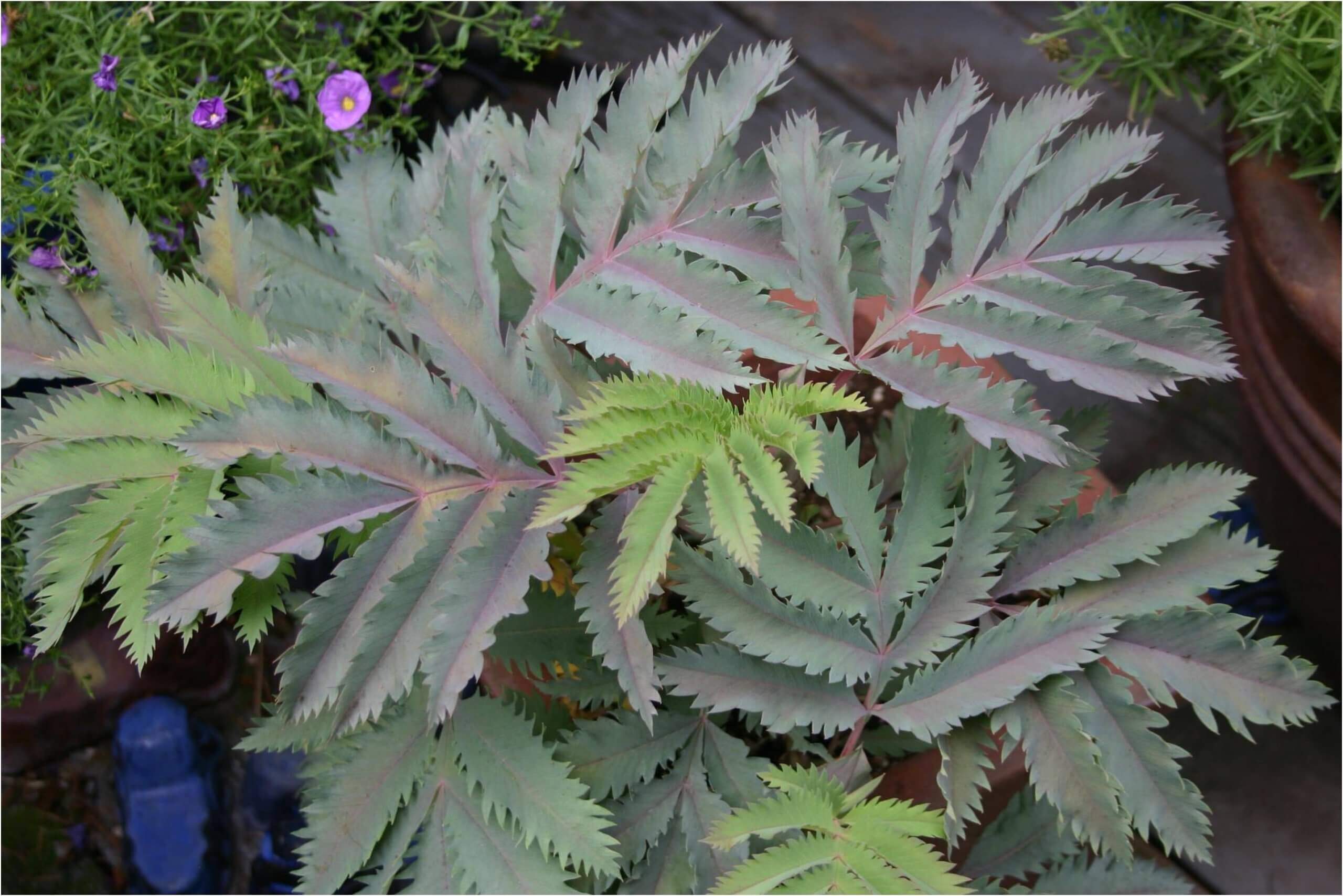
I knew that I had many containers around my garden, on the deck, on the patio, in the flower beds, at the entryway, along the driveway, but I never really thought about how many I actually had. Today, I walked around the garden and counted. My final count was 148. That is more than I ever dreamed of and so I made a second trip around the garden just to be sure and the number came up the same, 148.

Some of these containers are small, less than 6” in diameter, and others are large, over 36” in diameter, with all sizes in between. Some are round, some square, some oblong, some vase-shaped, some cylindrical and colors of black, red, turquoise, forest green, rustic, shades of blue from dark to light and the list goes on. Some of my containers are in groupings and others are individual pots.
Of the 148 containers in my garden, all are planted. However, I have some pots that are not planted and are purely for decorative purposes. In the past few years, I have visited many gardens where a beautiful pot is a ‘stand alone’ and can even be considered garden art.
There are many reasons for using containers in a garden. One high-on-my-list reason is that containers allow me to control the soil environment that the plant will be growing in. For most of my containers I use Black Gold All Purpose Potting Soil but for containers than are hanging or in a plant stand, I use Black Gold Waterhold Cocoblend Potting Soil, which contains coir to help retain water. I have found that containers that are up off the ground tend to be exposed to more drying wind and thus are quicker to become dry. This year I will also try the new Black Gold Moisture Supreme Container Mix, which also contains coir in addition to slow-release fertilizer that feeds plants for up to 6 months. When I have succulents or cacti, I use Black Gold Cactus Mix because it provides the fast-draining medium these plants require.

The other high-on-my-list reason for using containers is that they are mobile. Plants can be moved around depending on the season as well as for sun/shade reasons. For example, on our deck, we have a container with blooming hellebores. They have been in bloom since January and as the flowers wane, I can move the container to another location, where it is not quite so prominent, and bring in a new container with different flowering plants for the particular season. For this highly visible space on our deck, except for perhaps November and December, I can always bring up something in bloom. Also, being mobile means that tender plants can be moved into a house, shed, greenhouse or some other protected space during the winter.
Once I have added potting soil to a container, I always add some kind of organic fertilizer, if the mix does not already contain fertilizer. Black Gold All Purpose Fertilizer is ideal as it has some blood meal for a quick release of nitrogen and alfalfa meal for a slow release. It also has some bone meal and feather meal to provide additional nutrition.
While any plant can be grown in a container, I tend to like plants that will provide summer color with either foliage or flowers with fragrance, as an added bonus. One requirement for several of my containers is that I choose flowers that attract hummingbirds; most varieties of Salvia will do just that. I also like to mix things up a bit and have a few plants that people do not expect to see in containers.

Some of the new dwarf Ginkgo that are very slow growing provide easy-care summer foliage. A favorite is Ginkgo biloba ‘Majestic Butterflies’ with its beautiful variegated leaves. Another striking foliage plant is Melianthus major ‘Antonow’s Blue’, which as the name indicates has blue foliage.
Three signature plants in my summer garden, which I plant in three very large pots, are Ensete ventricosum ‘Maurelii (red-leaved banana), which has dark red leaf stalks and leaves that are tinged with red on the upper surfaces. While these are ‘annuals’ growing outside in the Pacific Northwest, they grow so fast and produce such a spectacular show that I think they are worth it just to have in the summer garden because of the foliage. In the spring, I start with 3-foot plants and by August they will have reached 8 to 10 feet.
There are many choices for container plants to provide an abundance of summer color and while I have some repeats that I use, I do like to always try something new. Be sure to check your location for sun or shade and plant accordingly. I suggest visiting other gardens in your area to get some ideas on what to plant and by starting with a good potting soil, you should have great success.

